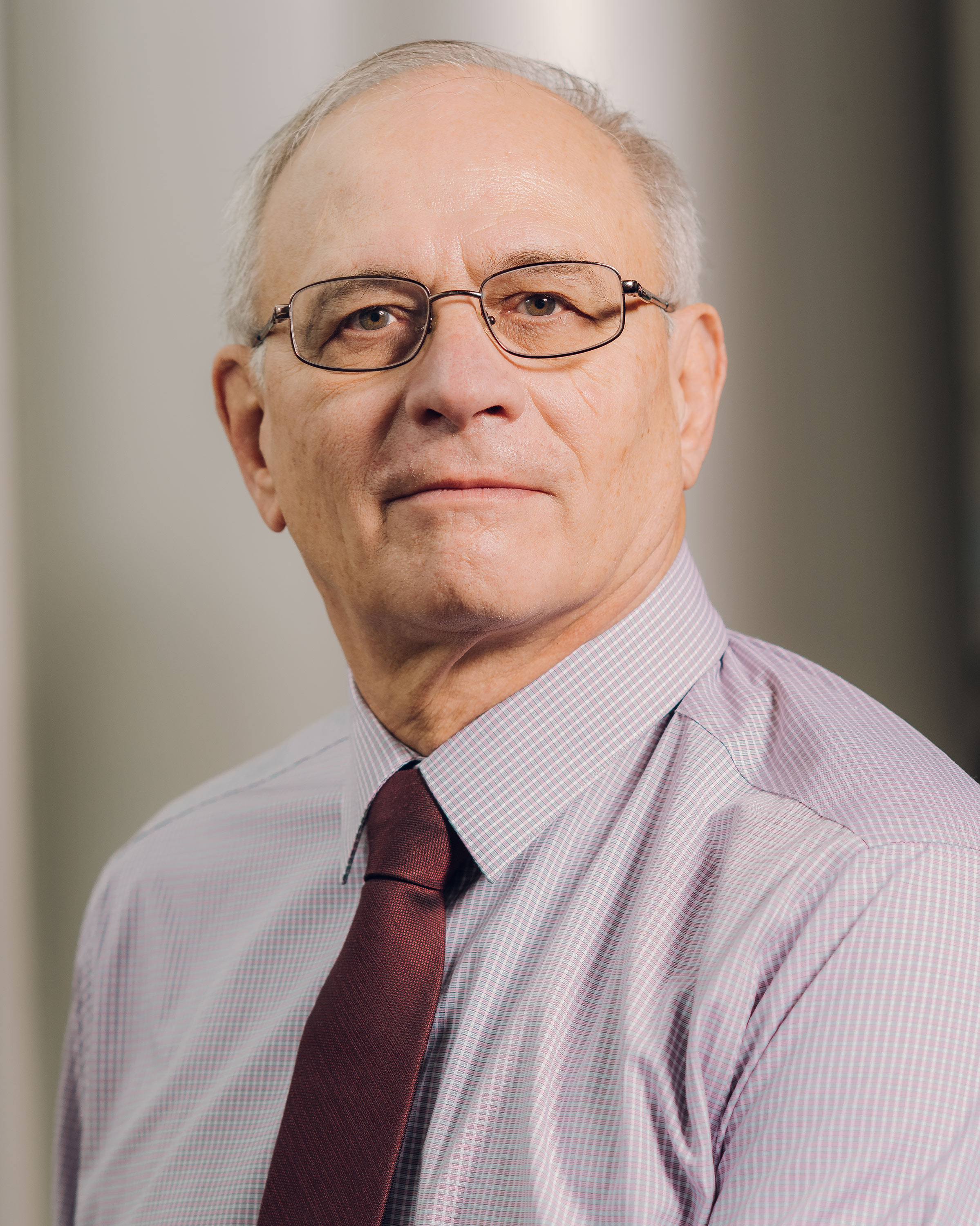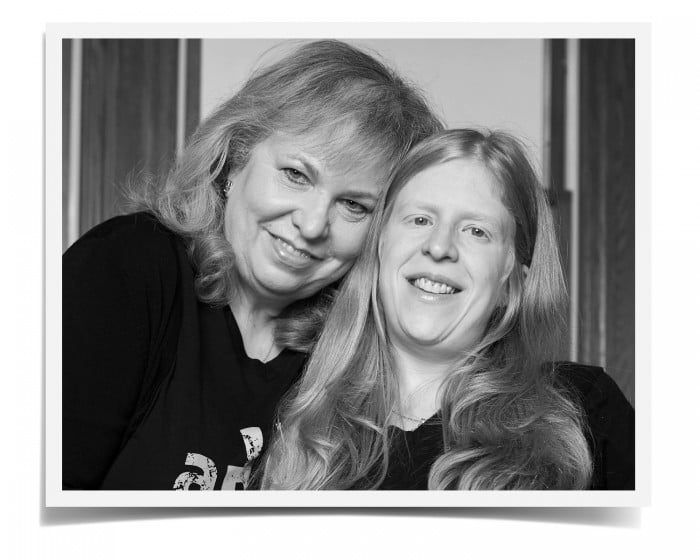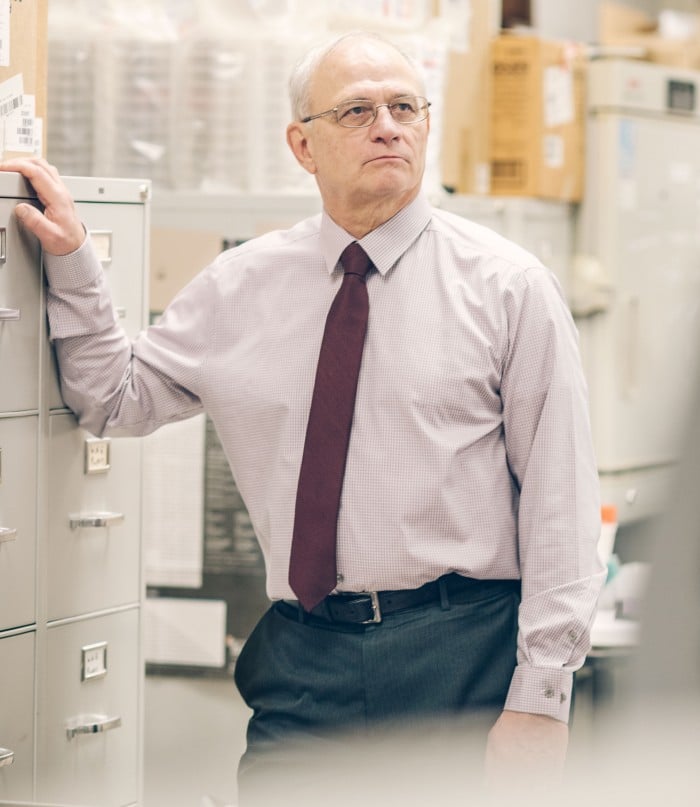The doctor of nearly lost causes

Donna Appell was a young, terrified mother when she picked up the telephone in her Long Island home and dialed the National Institutes of Health in Washington, DC.
Her daughter, Ashley, had been born with a rare genetic disorder called Hermansky-Pudlak syndrome, a potentially fatal form of albinism whose effects can include blood clotting problems and lung damage. “We were desperate, because she was extremely ill and hemorrhaging and was a very sick child,” Appell recalls. “I’m a nurse, and I was at work one day and one of the doctors said: Ashley’s case is an NIH case.”
So Appell cold-called one of the world’s most prestigious medical research institutions. “I was crying on the phone to the operator, and I got routed to this doctor, and it was Dr. Gahl,” she remembers. “It was an incredible moment. I felt like I’d reached God.”
People who suffer from rare diseases, and their families, often feel abandoned by a medical establishment defined by the practicalities and economics of medicine, a system geared toward finding approaches that will cure the largest number of patients.
But William Gahl ’72 focuses on the exceptional, the seemingly flukish, the unknown. His calculations are different.
Both a pediatrician and a biochemical geneticist, Gahl has spent nearly four decades at NIH, where he’s become the world’s most prominent expert on rare metabolic diseases. He was the clinical director of the National Human Genome Research Institute for 16 years, he’s authored or coauthored 511 peer-reviewed papers, and the list of honors he’s won—including the American Medical Association’s highest, the Dr. Nathan Davis Award for Outstanding Government Service—can’t fit on a single page. His peers call him a “super-diagnostician.”

Today he heads the Undiagnosed Diseases Program at NIH, which he more or less single-handedly launched in 2008 with about $280,000 in seed funding. So far, Gahl and his colleagues in the program have discovered 23 new genetic disorders and disease phenotypes.
Appell still vividly remembers her first conversation with Gahl, when she described her daughter’s condition.
“He was very interested, but measured, and he told me to write up the other cases I knew of. There were around 20 at the time,” she says. “I felt like it was the chance of a lifetime.”
Gahl ultimately invited Ashley to NIH, where she became the index case—the first person with Hermansky-Pudlak studied by the center’s researchers. That investigation ultimately triggered a sea change in medical understanding of the disease. Over the course of several decades, Gahl and his colleagues identified three of the nine genes now known to cause Hermansky-Pudlak and determined the condition’s natural history, or progression. This research allowed them to help pinpoint the variations that lead to the scarring of lung tissue known as pulmonary fibrosis, which makes it difficult to breathe and is the most common cause of death for those with certain types of Hermansky-Pudlak.
He’s also a medical board member of the Hermansky-Pudlak Syndrome Network, which Appell started and continues to run.
“He’s so big in his universe but never forgets that we’re here. He answers us really promptly and answers all my stupid questions,” Appell says. “He came to our first annual conference, which we had in our living room. He still comes to our annual conference. It’s our 27th. He’s never missed one—in 27 years.”
Gahl and his colleagues are currently collaborating with other researchers on a promising cure for the pulmonary fibrosis associated with Hermansky-Pudlak. Having completed preclinical studies, Gahl’s lab is now studying it in an animal model, and planning for clinical trials is next. The researchers are hopeful that it could one day help patients like Ashley, who turned 33 in December. When she first came to NIH, people with Hermansky-Pudlak were mystified by their condition and had no hope of a cure. Gahl’s work has given them a clear path forward—and a belief that a cure is possible. It could also help the larger population of patients whose pulmonary fibrosis has other causes.
“This is a little complicated”
As the world’s largest clinical research hospital, the NIH Clinical Center thrums with promise and intensity. Gahl, 69, strides through its drab, narrow corridors with the athletic bearing of the wrestler he was in high school and college. In his corner office on the 10th floor, he keeps M&M’s on his desk for visitors and a bag of potato chips stashed in a half-closed drawer. His wife, Mary, with whom he has four children, works at a high school and has cautioned him about dispensing treats without proper hygiene. He now keeps the M&M’s in a spouted jar and fills it with a funnel, to avoid all manual contact. “She thought I was going to be a real doctor,” he says, cracking a wry smile. “Which didn’t work out.”

Gahl’s desk is covered in papers and books and fluorescent Post-it note reminders. His computer monitor sits on two enormous volumes of The Metabolic and Molecular Bases of Inherited Disease—the bible for biochemical geneticists, first written by his most influential professor at MIT, John Stanbury. Gahl contributed to later editions.
“When I was at MIT, I wanted to do inborn errors in metabolism, which is the trade term for biochemical genetics,” Gahl says, loafered feet resting on the edge of a drawer as he leans back in his chair. “He was the father of that, and at MIT I worked in his lab. I finally got to write a couple of chapters.”
Growing up in the Milwaukee area, Gahl was first in his class all 16 quarters he attended the Jesuit Marquette High School. “Every quarter, they’d have honors assemblies,” recalls his younger brother Robert Gahl ’74, who followed him to MIT and is now a family doctor in east-central Wisconsin, where he still makes house calls. “Bill went up to the stage so many times they started calling them ‘Bill Gahl Assemblies.’”
“Our mother didn’t let us get a big head. She told us, ‘You’re not supposed to brag—you’re supposed to use your gift,’” he adds. “Bill’s using his gift.”
At MIT Gahl finished all the required classes for his biochemistry major in three years. “So he started taking medical courses at Harvard,” his brother says. “He didn’t have to take a bunch of classes, because he always knew more than the professors over there.” After graduating from MIT, he went straight to medical school at the University of Wisconsin, working on his PhD at the same time.
“There are a lot of people smarter than I am in the world, but working helps me understand things. I can’t lie on the beach. I work Saturday and Sundays. That’s when you get things done.”
Gahl attributes his accomplishments simply to hard work. “There are a lot of people smarter than I am in the world, but working helps me understand things,” he explains. “I can’t lie on the beach. I work Saturday and Sundays. That’s when you get things done.”
He sits up in his chair and turns toward his computer to launch into an explanation of how he conducts his research. “First we find the gene,” he starts.
Then he pauses. Intuiting the lack of biochemistry expertise in the person he’s speaking with, he tries to find the best possible way to communicate the complexities of medical genetics—how the investigative hunt across 3.2 billion base pairs in the human genome leads to the source of a disease that no one has ever diagnosed before. “This is a little complicated,” he says.
“Why not?”
Gahl entered MIT as a math major “but was dissuaded from that rather early,” he says. While working in Stanbury’s lab and taking biochemistry and biology courses, he found a path in the nascent field of medical genetics that appealed to his searching, research-geared mind. “It was fascinating to me to see that all these pathways I was studying were the causes of disease,” he says. “There was a service issue, too. I wanted to be a physician to advance the care of patients, and I saw a good entry to that that was pretty darn academic.” His eagerness to go all-in on the academics made him something of an anomaly. “Most medical students eschew this stuff,” he says. “They don’t want to memorize pathways.” His colleagues now say he has an astonishing ability to recall disease pathways on demand. That, Gahl says, came from his class time at MIT.
With his MD and PhD in hand, Gahl was doing research and teaching in the pediatrics department at the University of Wisconsin–Madison when he applied for a staff fellowship at the Interinstitute Medical Genetics Program at NIH in 1981.
Within the next decade he had found the biochemical cause of cystinosis, a rare disease in which an amino acid called cystine accumulates in some organs, most commonly the kidneys. Before Gahl’s discovery led to the development of an effective treatment, it was fatal. By 1989, he was chief of the Human Genetics Branch of the National Institute of Child Health and Human Development. In 2002, he became the clinical director of the National Human Genome Research Institute, the head of that institute’s biochemical genetics section, and the head of the Intramural Program of the Office of Rare Diseases.
“My bosses kept quitting,” he jokes of his rise through the ranks.
During his early years at NIH, Gahl became friends with Stephen Groft, who served as a liaison with the FDA and was a key architect of the Orphan Drug Act of 1983, which gives the pharmaceutical industry incentives to invest in research on drugs for populations too small to promise blockbuster profits. “He and I were close because we both love rare diseases,” Gahl says.
Groft explained to Gahl that 6% of the calls to NIH from the public are from people who don’t know exactly what is wrong with them, despite years seeking care at major medical centers around the country. Most are desperate for help.
“The hardest thing is getting a diagnosis,” Groft says. “Until you get the diagnosis, you don’t know what to do. You can treat the symptoms, but that’s the best you can do. Once you obtain a diagnosis, you can look for other research protocols somewhere around the world, find patient advocacy groups or a natural history study.”
Groft eventually secured funding that would help Gahl launch the Undiagnosed Diseases Program (UDP) in 2008. The scrappy program started with just a few employees, so Gahl’s main challenge was enlisting the help of researchers and doctors to read the flood of applications coming in every year. (Of the 400 or so that come through, the program accepts about 125.)

“We were inundated with charts,” Gahl remembers. “I had to rely on my colleagues.” When that eventually became too burdensome, Gahl got more funding and started hiring his own employees. He’s now up to about 30.
Patients accepted into the program come to NIH for five days of evaluation by the team of researchers Gahl has brought together. Much of the work is done after the patient leaves, as the researchers embark on the time-consuming process of reviewing the genetic data. (Of the more than 1,200 admitted into the program, more than 300 have received diagnoses.)
Clinical neurologist Camilo Toro, a UDP employee, says Gahl isn’t like the prototypical academic physician at a conventional teaching institution—or even at NIH. “He has an incredible sense of humanity that breaks a lot of barriers that you find in the context of our work,” he says. “We discuss very, very complex cases. You sit around the table with 10 colleagues and everyone says, ‘No, it can’t be done,’ or ‘This experiment is impossible.’ Everyone brings a reason why something can’t be done. When it’s Bill’s time, he says, ‘Why not? What would it take?’”
On his CV, which runs 35 pages, the word “we” occurs more often than any other pronoun.
“He doesn’t hesitate to give authorship to a colleague,” Toro says. “He’s incredibly generous with these things.”
“You sit around the table with 10 colleagues and everyone says, ‘No, it can’t be done,’ or ‘This experiment is impossible.’ When it’s Bill’s time, he says, ‘Why not? What would it take?’”
“How to be a human being”
The UDP’s first major breakthrough was finding the genetic cause of an unusual vascular disease affecting nine people, including five siblings from Kentucky and Ohio.
Members of the family came to the UDP complaining of pain in their legs and saying it hurt to walk. The researchers attributed this to an inadequate supply of blood to the legs, caused by calcification in the blood vessels. But there was an especially unusual finding, too: new vessels were developing in the patients’ legs to supply blood. It was so unusual that the UDP accepted the patients right away.
When the doctors learned that the siblings’ parents were third cousins, they zeroed in on the roughly 1% of the patients’ genomes that had derived from a common ancestor. In that fraction of the genome, any mutation that occurred would be present on both copies (alleles) of the gene in which it resides, likely destroying the gene function. They ultimately found such a “biallelic” mutation and demonstrated that it was causing the disease.
This needle-in-a-haystack scenario might sound like such a rarity that it barely has any application beyond these patients. But the finding could mean a better understanding of other diseases involving calcification, including vascular disease, and the results were published in the New England Journal of Medicine.
The researchers came up with an unwieldy name for the disorder: “arterial calcification due to deficiency of CD73.”
“We sat around and thought: What could we call it? Because the acronym is ACDC,” Gahl says. “The New England Journal of Medicine wouldn’t accept that, but we keep calling it ACDC to be jerks.”
A mug with the title of the AC/DC song “Highway to Hell” sits on his desk.
The finding and its publication cemented the program’s reputation, and helped create momentum for building a national network of 12 research centers and an international network of rare-disease programs across 16 countries. On a recent weekday, Gahl was preparing to fly to Paris to speak at a conference of the International Rare Diseases Research Consortium, where he made a successful appeal for support to establish a list of rare diseases that will be recognized internationally.
But his presence is always in demand back home at NIH. After the UDP was launched, his rounds there became so popular that everyone who wanted to listen in wouldn’t fit in the patient’s room. So now, patients are transported to a larger meeting room, where he conducts a bedside interview. “I think it teaches some medicine, but it also teaches how to be a physician,” he says. “And, maybe even more broadly, how to be a human being.”
Today, UDP rounds sessions are always packed with students and interns eager to be released from the confines of the lab and learn from an NIH hero who also happens to be unusually approachable and witty. Once, the fire marshal came and asked some people to leave because the room was so packed.
“The general idea is to give context to the work—that there’s a goal much bigger than getting the Western blot or the sequencing done,” Toro says. “It’s to convey to young students that there’s a human at the end of the pipette.”
By combing through the billions of base pairs in the human genome, Gahl works to unravel the mysteries of exceptionally rare diseases. But in that rarity, he believes, the UDP will make new breakthroughs for biochemistry, cell biology, and medicine. “Bill’s able to help identify and fix things genetically,” his brother says. “For all of humanity. He’s doing it on a world scale.”
But for Bill Gahl, it’s much more straightforward than that. “I’m a doctor,” he says.
He glances at his watch and apologizes. It’s a colleague’s birthday, he says, and excuses himself for cake.
Keep Reading
Most Popular
Large language models can do jaw-dropping things. But nobody knows exactly why.
And that's a problem. Figuring it out is one of the biggest scientific puzzles of our time and a crucial step towards controlling more powerful future models.
The problem with plug-in hybrids? Their drivers.
Plug-in hybrids are often sold as a transition to EVs, but new data from Europe shows we’re still underestimating the emissions they produce.
Google DeepMind’s new generative model makes Super Mario–like games from scratch
Genie learns how to control games by watching hours and hours of video. It could help train next-gen robots too.
How scientists traced a mysterious covid case back to six toilets
When wastewater surveillance turns into a hunt for a single infected individual, the ethics get tricky.
Stay connected
Get the latest updates from
MIT Technology Review
Discover special offers, top stories, upcoming events, and more.